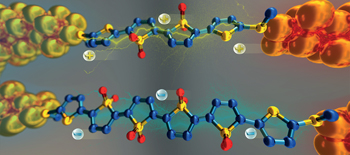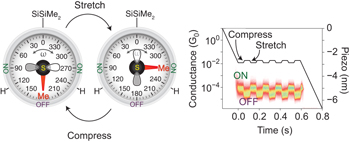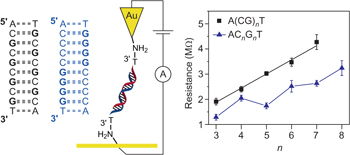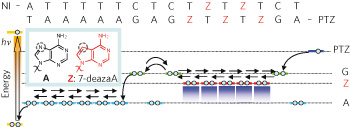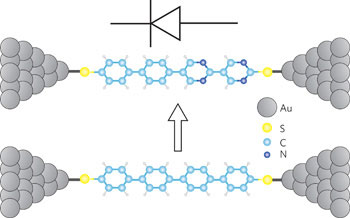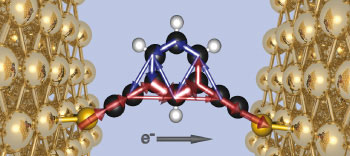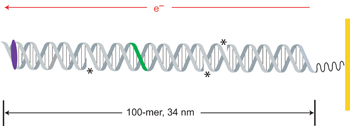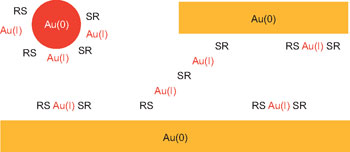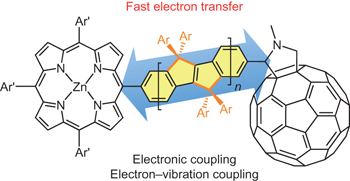Molecular electronics under the microscope - p181
doi:10.1038/nchem.2200
The field of molecular electronics has developed significantly as experimental techniques to study charge transport through single molecules have become more reliable. Three Articles in this issue highlight how chemists can now better understand and control electronic properties at the molecular level.
Full Text - Molecular electronics under the microscope | PDF (54 KB) - Molecular electronics under the microscope
See also: Article by Dell et al. | Article by Su et al. | Article by Xiang et al.

